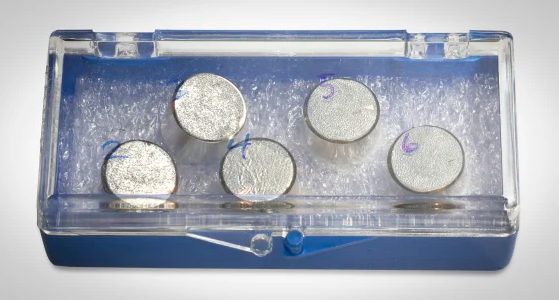Samples of moon dust collected by Neil Armstrong during the historic Apollo 11 mission in 1969 will go up for auction Wednesday, April 13 in New York City.
The auction item, which includes five samples of lunar dust, is a rare piece of space history and could be worth up to $1.2 million, according to Bonhams, the auction house handling the sale. The dust samples had a wild and controversial journey to sale and will be the only known samples of lunar dust sold legally after being authenticated by NASA.
“There’s never been a verified Apollo lunar sample offered at auction, so we’re just so pleased and honored to offer this,” said Adam Stackhouse, a specialist at Bonhams who is overseeing its Space History sale.
The auction item, which includes five samples of lunar dust, is a rare piece of space history. It is believed to be worth close to $1.2 million.

The particles for sale can be found in a blue plastic container on five aluminum disks, each topped with a small piece of carbon tape that was used to retrieve moon dust from a collection bag. On July 21, 1969, after Neil Armstrong and Buzz Aldrin became the first humans to set foot on the moon, Armstrong gathered a small “contingency sample” of lunar dust before carrying out the rest of his planned activities on the lunar surface, according to NASA protocols. The idea was that if the mission needed to be cut short for any reason, Armstrong and Aldrin would be able to return to Earth with the contingency sample in tow.
At the end of the Apollo 11 mission, the bag — mostly empty but still speckled with particles of lunar material — was loaned to a space museum in Kansas, according to NASA. It was subsequently seized by the United States Marshals Service after Max Ary, the director of what was then known as the Kansas Cosmosphere and Space Center, was found guilty in 2005 of stealing and selling artifacts that belonged to the museum and NASA.
In 2015, the U.S. Marshals Service sold the bag in an auction, where it was purchased along with several other space artifacts for $995 by an Illinois lawyer and geology enthusiast named Nancy Lee Carlson.
Carlson sent the collection bag to NASA that same year to authenticate its origin. The space agency verified that the artifact was real and claimed that it belonged to the government, refusing to return it.


